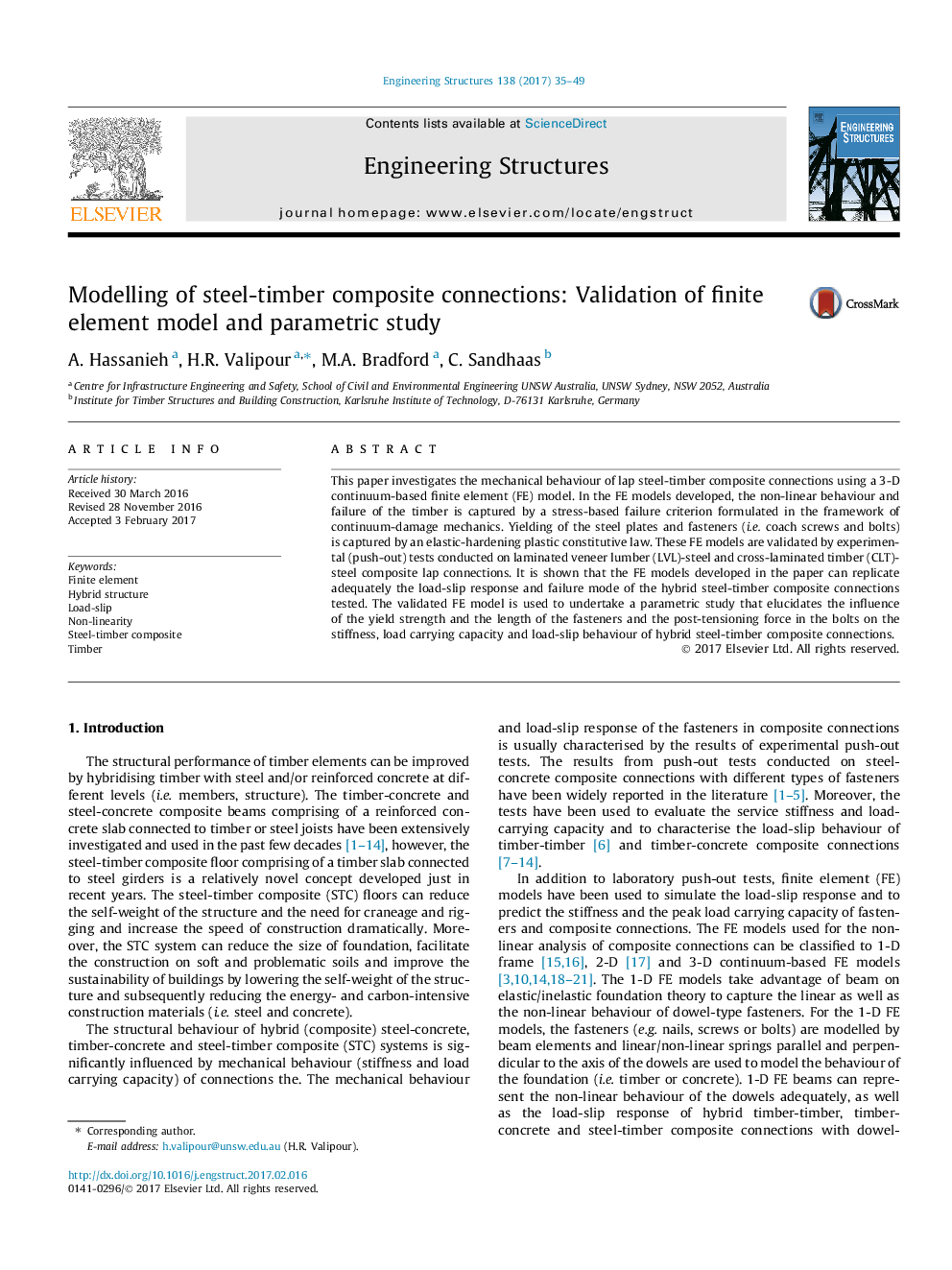| Article ID | Journal | Published Year | Pages | File Type |
|---|---|---|---|---|
| 4920313 | Engineering Structures | 2017 | 15 Pages |
Abstract
This paper investigates the mechanical behaviour of lap steel-timber composite connections using a 3-D continuum-based finite element (FE) model. In the FE models developed, the non-linear behaviour and failure of the timber is captured by a stress-based failure criterion formulated in the framework of continuum-damage mechanics. Yielding of the steel plates and fasteners (i.e. coach screws and bolts) is captured by an elastic-hardening plastic constitutive law. These FE models are validated by experimental (push-out) tests conducted on laminated veneer lumber (LVL)-steel and cross-laminated timber (CLT)-steel composite lap connections. It is shown that the FE models developed in the paper can replicate adequately the load-slip response and failure mode of the hybrid steel-timber composite connections tested. The validated FE model is used to undertake a parametric study that elucidates the influence of the yield strength and the length of the fasteners and the post-tensioning force in the bolts on the stiffness, load carrying capacity and load-slip behaviour of hybrid steel-timber composite connections.
Related Topics
Physical Sciences and Engineering
Earth and Planetary Sciences
Geotechnical Engineering and Engineering Geology
Authors
A. Hassanieh, H.R. Valipour, M.A. Bradford, C. Sandhaas,
